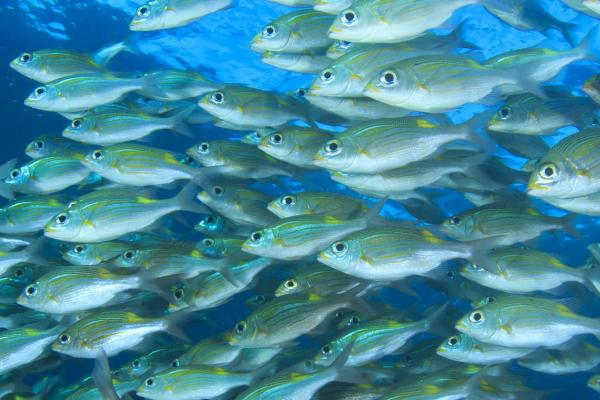Marine wildlife lives in an environment ideally suited for acoustic communication – most of the ocean is dark, and sound travels nearly five times faster in water than it does in air. Consequently, many marine animals use sound to navigate, communicate, find food, or defend territories.
The ocean is alive with sounds. Some ocean sounds originate from non-biological sources – such as waves, rain, and underwater earthquakes – while others come from biological sources, like marine mammals and fish. People also introduce sounds into the ocean, through marine construction, naval activities, oil and gas development, and vessel traffic. Over the last half-century, human activity has steadily increased the levels of ocean sound, which can be problematic for marine species. When animals are close to some of the most intense sound sources, they can experience temporary or permanent hearing loss, or even mortality. Other sounds may cause behavioral disturbances or masking – when an animal cannot hear important acoustic sounds over background noise.
Understanding the complexity of ocean sound - specifically the impacts of man-made sound on marine life – is vitally important to BOEM’s mission as we work to manage energy development in a way that protects ocean life and resources.
As the spotlight on marine acoustics issues has increased over the last several decades, BOEM has expanded its efforts to understand this field by considering a wider variety of marine species and sound sources.
In 2020, BOEM launched its Center for Marine Acoustics (CMA) to build the bureau’s expertise and strengthen its role in managing and understanding underwater sound. The CMA provides expertise and leadership to drive best practices, expand research on underwater sound, seek policy improvements, and improve messaging related to marine acoustic issues.
We push for innovation while championing consistency, high scientific rigor, and efficiency where needed. BOEM has invested more than $95 million on protected species and acoustics-related research since 1998, relying on specialists in marine biology, ecology, and acoustics to produce, evaluate, and incorporate the best available science into our management decisions. This research and BOEM’s engagement in environmental reviews has significantly improved scientific understanding of how anthropogenic noise affects marine life.
We invite collaboration on our working documents and on developing needed research relating to our mission. Feel free to contact us at boemacoustics@boem.gov.


